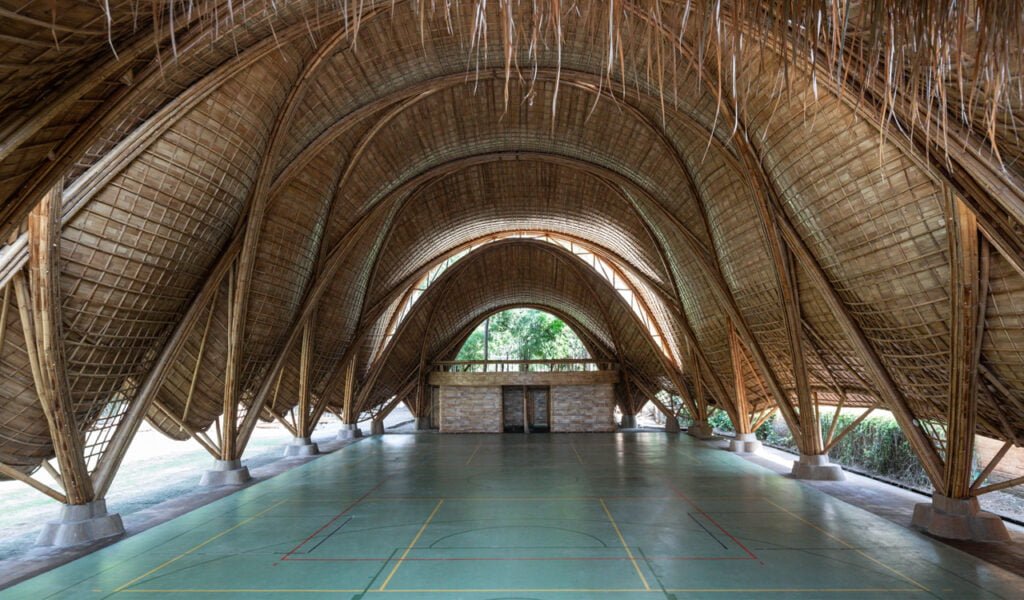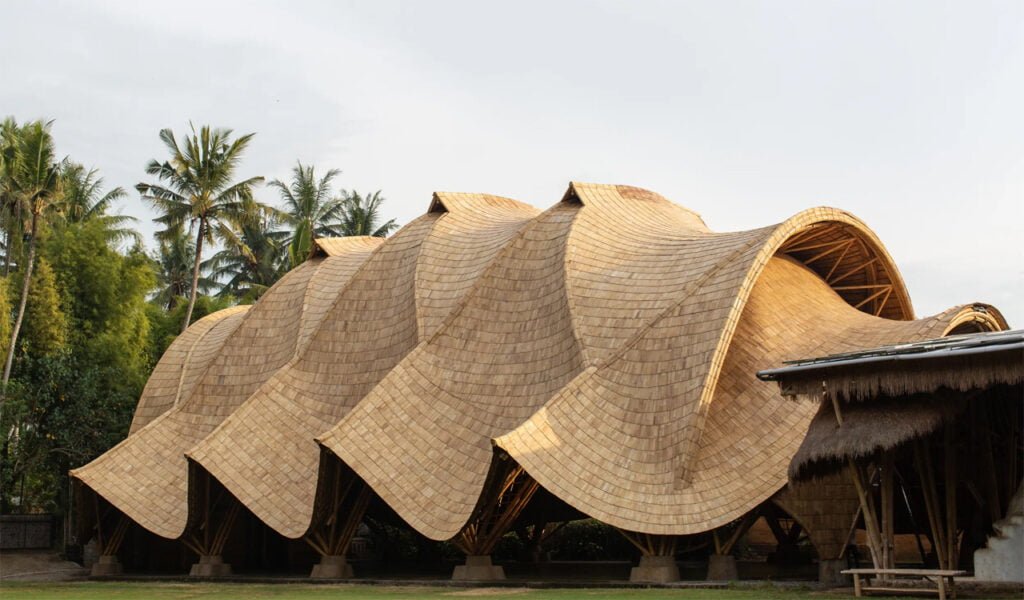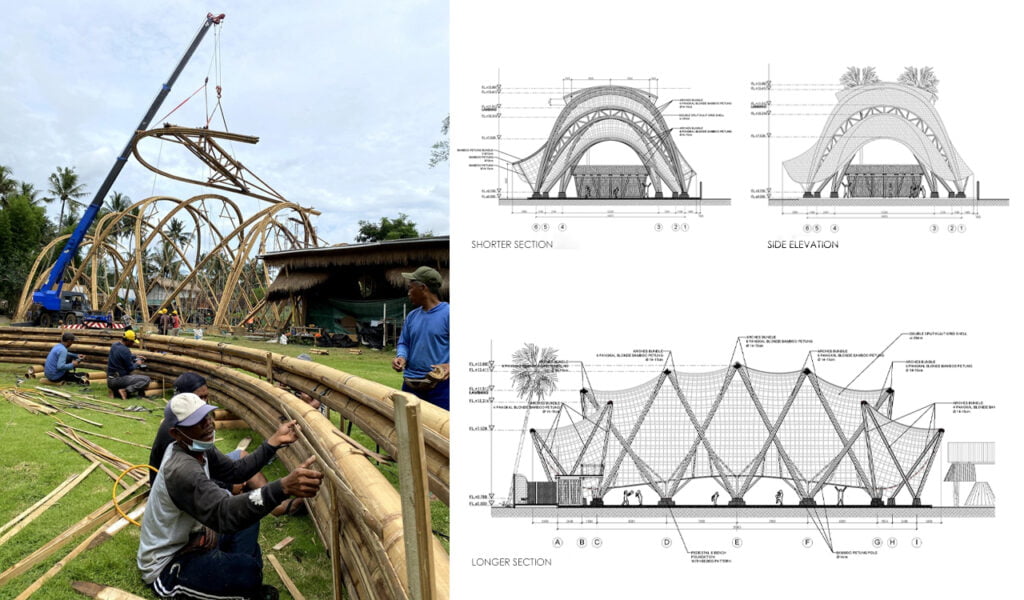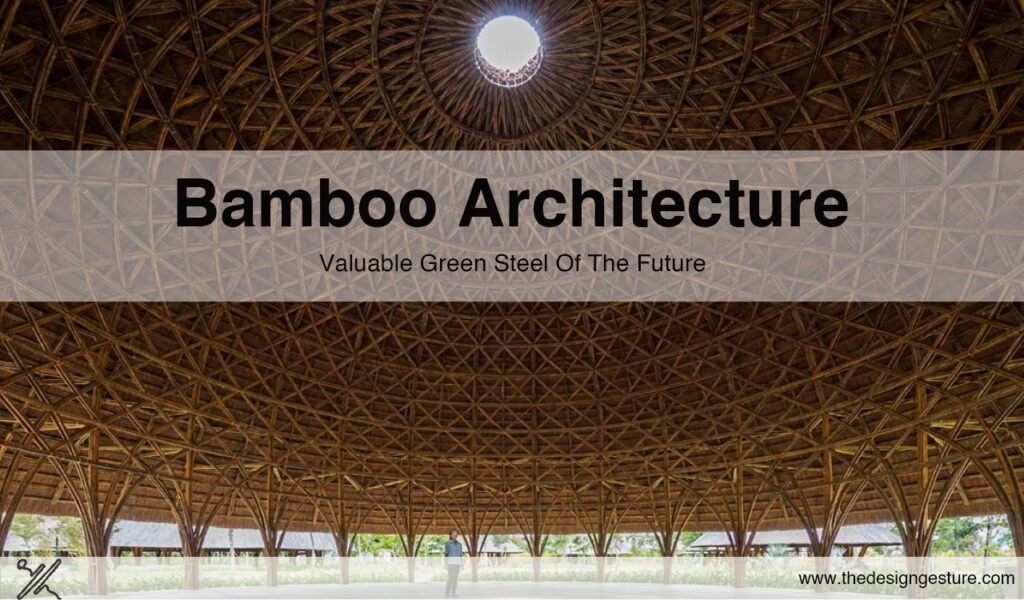Sustainable building materials that are economical, renewable, and environmentally benign are growing in favour. Bamboo is a grass that grows swiftly, and because of its superior traits and capabilities, it is now a viable substitute for traditional building materials. This article explores the numerous advantages, disadvantages, and real-world applications of bamboo as a sustainable building material.
Table of Contents
Properties of Bamboo
The following characteristics of bamboo make it a good building material:
Strength and Durability
Bamboo has incredible strength and endurance despite its appearance of being lightweight, which opens up a wide range of construction applications. Bamboo has a better tensile strength than steel and other conventional building materials. Because of this quality, bamboo structures can withstand heavy loads, strong winds, and even earthquakes.
Low Cost
Bamboo is widely available and inexpensive when compared to other conventional building materials like concrete and steel. Due to its cost, even places with limited financial means can access it.
Rapid Growth and Renewability
The fastest-growing benefit of bamboo is one of several benefits it offers. Bamboo matures quickly, taking only three to five years as opposed to the slowly growing trees utilised in traditional building. Bamboo is a resource that is incredibly renewable and guarantees a steady supply of building materials due to its excellent growth rate.
Flexibility
The inherent flexibility of bamboo is a major benefit for building. Because bamboo is naturally flexible, bamboo buildings can endure earthquakes and bad weather. Bamboo’s capacity to bend without breaking makes it particularly useful in areas subject to earthquakes or strong winds.
Lightweight
Due to its small weight, bamboo is easier to ship, less expensive to build with, and easier on a building’s foundation. Because of this quality, bamboo is a fantastic choice for places with poor soil or difficult terrain. Additionally, due to how easily it can be handled, less work is needed during building.
Carbon Sequestration
Bamboo is incredibly effective in absorbing atmospheric carbon dioxide. Bamboo absorbs carbon as it grows, reducing the effects of climate change. Actually, compared to trees, bamboo may sequester up to four times more carbon. Carbon is stored in bamboo during construction, promoting carbon neutrality.
Low Environmental Impact
Compared to conventional building materials, bamboo has a significantly smaller negative impact on the environment. Growing bamboo requires less water and pesticides because it is inherently resistant to pests and diseases. Additionally, bamboo may be manufactured with less energy, which reduces carbon emissions associated with manufacturing.
Aesthetic Appeal
Bamboo is not only environmentally sustainable, but it also offers unique aesthetic qualities. Its distinctive appearance, warmth, and attractiveness in its natural state add a desirable aesthetic element to construction projects. An atmosphere of tranquilly, environmental awareness, and a sense of oneness with nature are fostered by bamboo structures.
Versatility
Bamboo is a flexible material that may be applied to a variety of construction projects. It can be used as roofing, flooring, wall panels, structural components, and decorative finishes. The versatility of bamboo enables inventive and imaginative solutions, allowing architects and builders to investigate new opportunities in sustainable building.
Advantages of Bamboo as a Building Material
Using bamboo in construction has a number of benefits, including:
Sustainability and Renewability
The two most significant advantages of bamboo are its renewability and sustainability. Bamboo is a quickly growing grass that matures in a few years, as opposed to the slowly growing trees utilised in traditional construction. Its rapid growth allows for repeated harvesting without depleting natural resources.
Strength and Durability
Being so light, bamboo is surprisingly robust and long-lasting. Due to its higher tensile strength than steel, it can withstand heavy weights and harsh weather. Constructions made of bamboo have been shown to withstand earthquakes and strong winds, making them suitable for locations at risk from such calamities.
Versatility in Design and Construction
Bamboo can be used for a wide range of construction projects. It can be utilised for structural elements, flooring, wall and ceiling panels, roofing, and even decorative treatments. Architects and builders can experiment with fresh and inventive concepts to produce visually beautiful and environmentally sustainable structures because to bamboo’s design versatility.
Cost-effectiveness
When compared to other building materials like concrete, steel, or wood, bamboo is somewhat less expensive. Cost-effective development activities are made possible by its accessibility to places with limited financial resources. Additionally, bamboo’s small weight reduces shipping costs and facilitates handling on-site.
Local Economic Development
Growing and using bamboo as a building material can lead to employment possibilities and promote local economic development, particularly in regions where the plant grows prolifically.
Disadvantages of Bamboo as a Building Material
Although bamboo has many advantages, it also has certain restrictions:
Vulnerability to Moisture
Bamboo is susceptible to issues caused by moisture, such as rotting, swelling, and insect infestation. Care must be taken, including thorough drying and the application of the necessary coatings, to prevent these problems. Bamboo structures are susceptible to degrade over time if sufficient maintenance is not given.
Limited Structural Heights
Due to its natural flexibility, bamboo shouldn’t be used to construct big buildings. It is typically used for low- to mid-rise structures. Alternative materials are required for taller constructions since bamboo’s vertical strength limits make it less appropriate for high-rise construction.
Lack of Standardization
Bamboo lacks a regulated grading system, which can make maintaining quality challenging. Different bamboo species and sources may have different strengths, tensile strengths, and other qualities. Thorough procurement and quality control are crucial for ensuring reliable and consistent bamboo materials.
Fire Resistance
Bamboo lacks any built-in fire protection. As a result of its propensity to catch fire, utilising it in construction calls for the application of the appropriate fire-resistant treatments and coatings in order to enhance its performance in a fire. By putting fire safety measures in place, the risk of fire in bamboo structures must be decreased.
Case Study: Green School, Bali, Indonesia

The Green School in Bali is a school that has gained recognition throughout the world for its commitment to environmental education and sustainability. The unusual architecture of the school, which is entirely constructed of bamboo, exemplifies the material’s versatility and aesthetic appeal.
Structural Integrity

The Green School’s bamboo structures serve as illustrations of bamboo’s durability and strength in construction. It is clear from the extensive use of bamboo beams, trusses, and columns that the material can withstand huge loads while allowing for spacious interiors.
Aesthetic Appeal
The bamboo structures of The Green School harmoniously blend into the surrounding nature, creating a stunning and green campus. The organic texture, warm hues, and unique patterns of bamboo enhance architectural aesthetics and foster a sense of connection to nature.
Integration of Sustainable Design Principles
The architectural design of The Green School follows sustainable design principles and incorporates features like rainwater collection systems, lots of natural light, and natural ventilation. Building open-air spaces is made simpler by the flexibility and light weight of bamboo, increasing natural airflow and reducing the need for artificial cooling.

Conclusion
Bamboo is a potential sustainable building material because of its wonderful properties, capabilities, and instances of achievement in actual construction projects. Due to its speedy development, durability, adaptability, and minimum environmental impact, it is a viable alternative to conventional construction materials. Bamboo can be used in architectural designs to create buildings that are affordable, aesthetically pleasing, and assist local economic progress. With continued research and standardisation efforts, bamboo has the potential to revolutionise the building industry and move us closer to a sustainable future.




